Sensors are small, tiny and intelligent devices that are used to measure physical variables like temperature, humidity, gas, velocity, flow rate, pressure and so on. According to American National Standards Institute, a sensor is defined as a device that provides a usable output in response to a specified measure.
A sensor acquires a physical quantity and converts it into a signal suitable for processing, for example, optical, electrical and mechanical, whereas a transducer converts a signal in one form of energy to a signal in another form.
According to the basic sensing principle, sensors can be classified into mechanical, electrochemical, bio, optical, semiconductor, magnetic and thermal types.
According to physical parameters measured by sensors, these can be classified into resistance displacement, inductive displacement, capacitive displacement, piezoelectric pressure, laser interferometer displacement, bore gagging displacement, ultrasonic displacement, optical encoder displacement, optical fibre displacement, optical beam deformation, flow, imaging, temperature, intelligent and chemical ingredient types.
The medical sensors market
The global medical sensors market is estimated to reach US$ 15.01 billion by 2022, at a CAGR of 8.5 per cent between 2016 and 2022. People are increasingly adopting home healthcare services owing to the rising costs of medical treatments in hospitals and medical care clinics. With this, demand for various healthcare devices is expected to increase in the next few years. Introduction of new medical sensors in the global market is expected to contribute towards the growth of the global medical sensors market in the years to come.

Market sizing for global medical sensors was done by top-down and bottom-up methods. In the bottom-up approach, market size, in terms of volume, for each type of medical sensors was calculated with their average selling price and then each type was mapped with applications. Summation of revenue from all types of sensors and applications gave the overall market size.
In the top-down approach, top companies in the market were analysed and their product portfolio studied to get the global market size for medical sensors. This overall market was analysed by percentage contribution of segments such as geography. Finally, geographic split of segments was further analysed to arrive at region- and country-wise break-up of the overall market.
Sensors in medical and biotechnology
In medicine and biotechnology, sensors detect specific biological, chemical or physical processes and then transmit or report this data. Some sensors work outside the body, while some are implanted inside the body.
Sensors used in the medical sector range from temperature sensors, pressure detectors, flow sensors, acoustic sensors and gas sensors to cameras, image sensors and magnetic field sensors. Image sensors and cameras used in the medical sector can be optical, X-ray and ultrasonic.
Use of sensors in the medical sector depends strongly on the application. The market for biomedical sensors and cameras as well as image sensors is growing in importance. MEMS sensors are expected to enable the design and production of smaller, smarter and lower-priced medical devices and systems with more functionalities. Global demand of wearable, wireless and disposable medical sensors continues to rise.
In medical diagnostics, various sensors are required for digital blood pressure meters, digital thermometers, breath analysers, spirometers, peak-flow meters, respiration pulse oximeters and sleep apnea monitoring devices, among others.
Biomedical sensors
In medicine and biotechnology, biomedical sensors can detect specific biological, chemical or physical processes and then transmit or report data. These sensors can also be components in systems that process clinical samples, such as increasingly common lab-on-a-chip devices.
Biomedical sensors are also used to monitor the safety of medicines, food, environmental conditions and other substances we may encounter. Upgrades in patient treatments can come to fruition through distinguished proof of new markers of malady, quick findings and more successive or non-stop observing, in the healing centre.
The empowering innovation for these energising advancements ranges from sub-atomic tests to entire estimation frameworks, and envelops substance sensors and biosensors, low-power circuits for information preparing and remote transmission, and novel ongoing sign handling.
The ecosystem of medical sensors includes research and development, assembly and manufacturing, suppliers, system integrators, distribution, marketing and sales, and end users.
Medical sensors can be categorised on the basis of type, application and placement.

On the basis of type.
Temperature sensors, blood glucose sensors, blood oxygen sensors, ECG sensors, image sensors, motion sensors, inertial sensors, pressure sensors
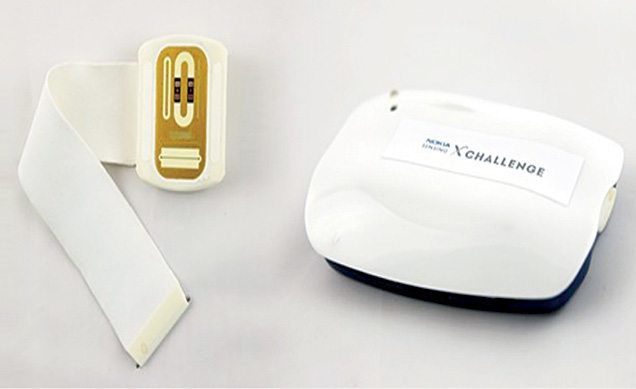
On the basis of application.
Diagnostics, monitoring, medical therapeutics, imaging, wellness and fitness
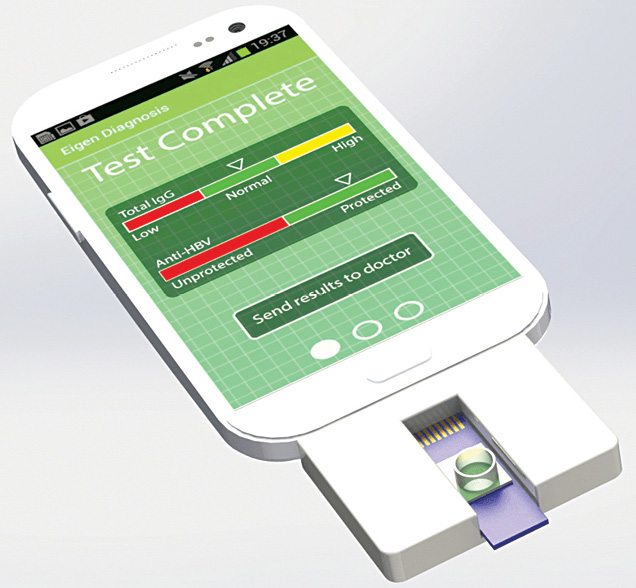
On the basis of sensor placement.
Strip sensors, wearable sensors, implantable sensors, invasive/non-invasive sensors, ingestible sensors
Special features of a biosensor are:
• Immobilised biological active material is used as a catalyst, and expensive reagents could be repeatedly used to detect same biological parameters.
• A biosensor has intensive specificity. Biomaterial only senses definitive ingredient and it is not affected by colour and concentration of measured material.
• A biosensor could quickly analyse the result of the measurand.
• A biosensor’s accuracy is very high, and a relative error could reach one per cent.
• A biosensor’s analysing system is very simple.
• Cost of a biosensor is low.
Next-generation biomedical sensors
DMI.
DMI stands for DNA Medical Institute. DMI device is a portable, compact device that uses a single drop of blood to perform hundreds of clinical lab tests, telling patients with gold-standard accuracy whether they have anything from the common cold to Ebola. DMI has a wide reach, focusing on global health, emergency and critical care, and Space medicine.
Vital sign monitoring platform.
This device is strapped to the upper arm, where it measures a wide variety of data as patients go about their daily lives. Measurements include temperature, blood oxygenation, movement and activity, heart rate, and cutaneous blood perfusion and volume, among others. Data is then uploaded to the Cloud and viewed on a smartphone or computer.
Eigen Lifescience device.
Eigen Lifescience device enables Hepatitis B rapid blood tests that can be analysed in minutes using the microprocessor on a smartphone. Designed for use in developing countries, the test can pinpoint patients who need treatment the most, thus, allocating services where these are most necessary. For instance, a child whose mother is infected with Hepatitis B must be treated within 12 hours. The experimental device might one day lead to testing for problems such as HIV, heart diseases and more.
Endotronix wireless health monitoring.
Endotronix has patented a new type of wireless sensor reader. The experimental product is designed with a sensor that is implanted during a routine catheterisation procedure. It requires no leads or implanted batteries, and sends data to a secure Web platform. The sensor is designed to improve the quality of life and medical outcomes, as well as lower costs for those who suffer from congestive heart failure and other cardiac ailments.
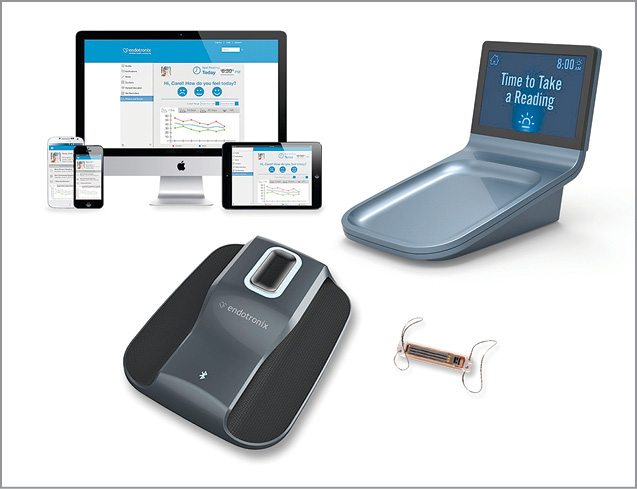
Golden Gopher Magnetic Biosensing system.
This portable, low-cost and easy-to-use device detects biomarkers in human serum and urine, as well as heavy metals in lake water. Known as Z-lab, this highly-sensitive sensor is now in development for smaller, more portable models.
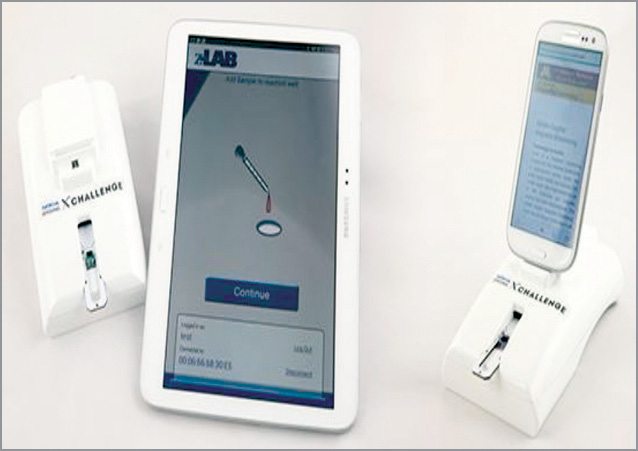
Electronic Aspirin.
For people who suffer from migraines, cluster headaches and other causes of chronic, excruciating head or facial pain, the ‘take two aspirins and call me in the morning’ method is useless. Doctors have long associated the most severe, chronic forms of headache with sphenopalatine ganglion (SPG), a facial nerve bundle, but have not yet found a treatment that has a long-term effect on SPG.
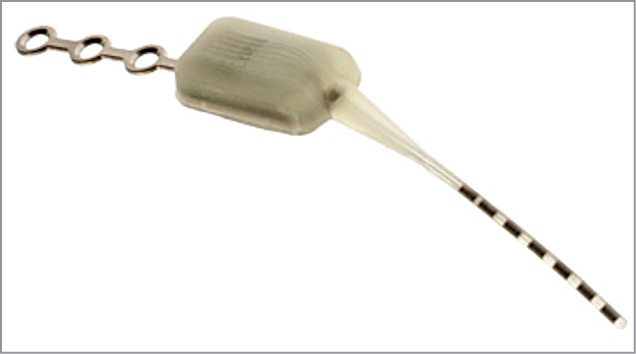
Electronic Aspirin is a patient-powered tool for blocking SPG signals at the first sign of a headache, and involves the permanent implant of a small nerve-stimulating device in the upper gum on the side of the head normally affected by headache. Lead tip of the implant connects with the SPG bundle, and when a patient senses the onset of a headache, he or she places a handheld remote controller on the cheek nearest to the implant. Resulting signals stimulate SPG nerves and block pain-causing neurotransmitters.
Google smart contact lenses.
Google has created smart contact lenses made for people who suffer from diabetes and those who simply wear glasses. The technology is engineered to take the tears in a person’s eye and measure glucose levels. For people who wear glasses, the lens would be engineered to what the companies say is ‘to restore the eye’s natural autofocus.’
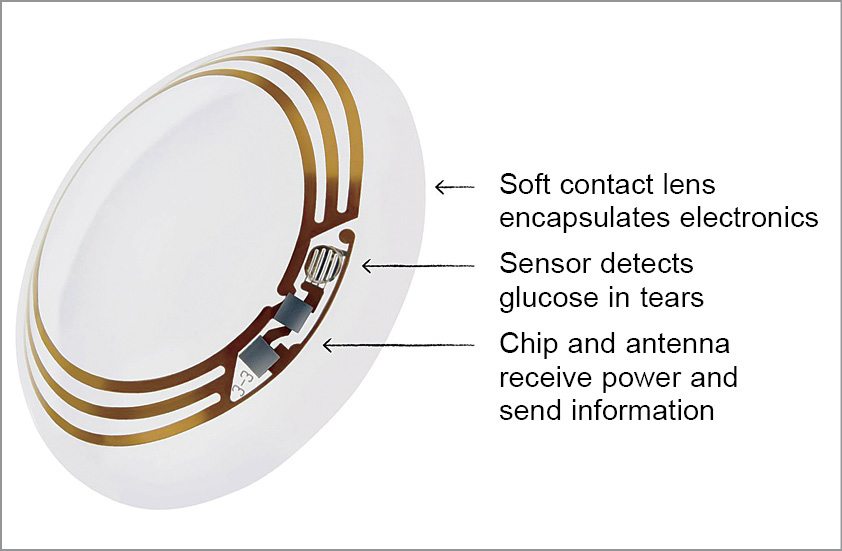
Anand Nayyar is assistant professor in Department of Computer Applications & IT, KCL Institute of Management and Technology, Jalandhar, Punjab. He has chaired many national and international conferences, and has published more than 250 research papers. He is life member of CSI-India, and senior member of ACM
Vikram Puri is member (ACM), theIRED, International Association of Engineers. He is interested in embedded systems, real-time systems, robotics, microcontrollers and programming in C/C++









Thank you for your valuable information about Biomedical sensors.